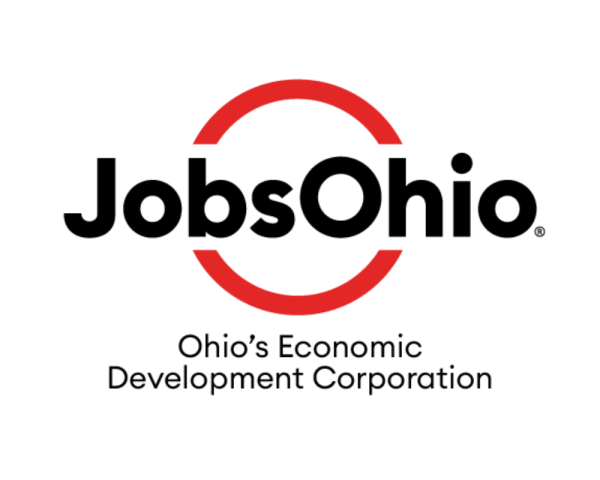‘Change’ is a word we have long-been comfortable with in Ohio – in fact, many famous Buckeyes have driven it spectacularly.Steven Spielberg, a son of Cincinnati, altered a generation of filmmakers’ approach to cinema; inventor of the lightbulb and countless other technologies, Thomas Edison, shaped all our lives for the better; and, perhaps most famous, astronaut Neil Armstrong, who came from Wapakoneta, Ohio, fundamentally changed the way we view our world.
I’ve always been fascinated by the process of change. It can be challenging, sometimes painful but always interesting and as a senior director at JobsOhio, I’ve seen a lot of it in the financial sector in recent years. The insurance industry, in particular, has undergone something of a revolution here in Ohio.
What’s driving it? To start with, the availability of better data. Insurance companies, for example, can monitor lifestyle habits to inform life insurance provision. Every month, many of us receive an email telling us about our driving habits, which impacts our premiums. It’s almost something we take for granted now.So, data analytics have been transformative but the real sea-change has been a radical shift in the provider’s relationship with the customer.
Insurance has been flipped on its head; a few years ago, the customer was a passive consumer of what the insurance industry wanted or could provide. Today, and increasingly in the future, it’s about designing products and services around what individuals want and need. And in a post-COVID world, customers want, need and, indeed, expect a personalised, omnichannel experience.
As Adam Erlebacher, CEO and co-founder of Cincinnati’s Fabric by Gerber Life, a one-stop shop to help families ‘master their financial lives’, says: “If you’re a parent and looking to secure your family’s financial future, you don’t necessarily wake up in the morning thinking about life insurance. We need to meet parents wherever they are in their journey.” This customer-centric approach, getting to the places where consumers are, is increasingly achieved through embedded finance, which is a result of maturing partnerships in the supply chain that have seen many founders shift from B2C to B2B and B2B2C models.
Anthony Spiteri, CTO at Battleface, a full-stack global insurance company with modular tech and embedded travel products, based in Ohio, says that partnerships across tech, insurance, travel and finance, have been key to his organisation’s success. Battleface disrupted the travel insurance industry in 2018 by offering extreme customisation for travellers using innovative underwriting and has gone on to develop a global infrastructure to provide claims and emergency travel assistance support under white-label arrangements with partner brands. It recently launched Robin Assist, a single platform offering travel insurance as a service to carriers, brokers, managing general agents (MGAs) and self-insured enterprise partners. It’s designed, among other things, to dramatically cut claim times.
“Technology can really help when you’re filing a claim,” Sasha Gainullin, CEO of Battleface, explained at the launch. “It can find the policy you have. It can eliminate the need for a claim form. It can identify the expense that you’re filing against the policy.”Accessing customers via third parties is now a business imperative.“As an insurtech, we’ve continued to grow and evolve into areas where we see a lot of opportunity. A big part of what we now do is a realignment to go more toward partnerships instead of direct-to-consumer. So, we’ve adopted a B2B2C model,” Spiteri says.
“With travel insurance, the direct-to-consumer model is difficult when considering the circumstances of trying to sell to somebody travelling at the right time, who still hasn’t purchased travel insurance. So, partnering with key partners in the travel and fintech spaces has helped us rapidly grow, and we’ve shifted our focus towards that, versus going direct-to-consumer.”
Also close to ‘home’, Ohio’s Matic is a digital insurance agency built for partners, integrating insurance directly into the property-owning experience. It has grown to work with more than 100 home and auto carriers and distribution partners in industries ranging from mortgage origination, servicing, and banking to automotive organisations and real estate.
“To support our growth, we’ve prioritised increasing our network of insurance carriers,” says Matic CEO Ben Madick. “One of the reasons we picked Ohio as our headquarters is because it is a hub for insurance. There are so many insurance carriers nearby, which helps us build relationships. Today, we have over 45 insurance carriers on our platform, which, three years ago, was probably under 20.“Our partnerships allow us to meet customers where they want to be and choose how and where they want to shop.
“From buyer behaviour trends, we’ve been able to create insurance carrier insights reports and supply this information to carriers in a way that they haven’t seen before. We’ve been working really hard over the last couple of years to design these reports in a way that is meaningful to our insurance carrier partners. It will help them become better in what they do, whether it’s pricing, product availability, or consumer experience. Ultimately, that supports our customers as well and allows us to be the best partner to our insurance carriers that we can be.”
The big daddy in this space is the long-established, Columbus-based carrier Nationwide. It has experience of building a partnership ecosystem with 30 portfolio companies in which it’s directly invested and many more that it’s partnering with. It has also seen and responded to insurtechs’ move towards targeting intermediaries as opposed to an exclusive B2C strategy.
Angie Klett, Nationwide’s vice president of corporate development, leading ventures, mergers and acquisitions, strategic partnerships and brokerage solutions says: “When I started in my role a couple of years ago, it felt as if founders were just focussed on disrupting the sales component of the value chain and replacing the intermediary altogether.
“If you look at all the results in the market, you can see that there’s proof that founders have been able to grow quickly in our industry. The question is, can they grow profitably? Even in the distribution space, there’s been a lot of growth, but given the cost of acquisition to loan-to-value equation in a direct-to-consumer model, we’ve seen more of a shift toward partnering with intermediaries versus disrupting them or eliminating them from the equation. It’s important to us to enable their business models.”
In this vein, Nationwide recently announced a partnership with GloveBox, a client experience platform for insurance agents and carriers, which sees the Denver-based insurtech integrate with Nationwide’s post-bind service APIs to deliver a seamless, digital policyholder service experience.
“This partnership will help agents who find demands on their time immense and growing by digitising some of the aspects of servicing within the agency,” continues Klett. “You’ll see more and more of a shift to partnering with the intermediary in the founder space. Just as consumers and access to data become more costly, the concept of selling direct-to-consumer may not work out.”
The power of the Nationwide brand in this space cannot be underestimated. Some partners with a startup brand can bask in the reflective glory that comes from association with, and endorsement by this behemoth. Being able to say that they’re doing business with Nationwide is fantastic for building their own brands, but the secret sauce in the mix is the technology that allows partnerships to take root and flourish. Nationwide embarked on significant investment in core system modernisation, enabling it to move quickly in the market and to take advantage of its breadth. It also built a partner platform; a digital chassis that’s housed centrally and can be used over and over. Klett says Nationwide has 214 underlying publicly available application programming interfaces (APIs) ‘powering millions of pings each day’.
“Investment in the digitisation of our partners is one of the most important competitive advantages that we have in the market. We’re able to be in-market with partners very quickly. It allows us to be nimble and responsive, which are two words that you don’t typically hear associated with 100-year-old insurance companies,” she adds.
Battleface has also leveraged its own versatile platform and is talking to other companies about taking claims and assistance in-house on the back of their technology offering. “We realised there’s a large market for directly working in the B2B space within the insurance industry,” says Battleface’s Spiteri. “Right now, our focus is mostly travel insurance, but [with our platform] we also see the possibility of getting into other lines, working with MGAs, brokers and insurance companies in the future. I think that’s going to be a big part of our 2023 while we also continue to grow the partnerships that we have, as well as acquire new ones.”
Fabric’s Erlebacher, meanwhile, stresses the need for compatible technology as a pre-requisite for partnering with a third party as well as a ‘forward-thinking strategy when it comes to digital distribution’.
“If the partner doesn’t have that, the best technology in the world is not going to solve that problem. Second, we’re looking for partners with digital backends that we can integrate seamlessly. If you have to build too much technology to take on the carrier partner’s work, it becomes a bit of a mismatch when operating your business.” When Fabric chose to accept an acquisition offer from Western & Southern last year, both the technology and the mindset were key deciding factors.
“It’s still rare to find an insurance carrier with the history that Western & Southern has that is looking so far into the future and willing to make the investments in their backend system to push forward on a digital front. That was extremely important to us,” says Erlebacher. You can’t talk about partnerships, without discussing embedded finance.
Nationwide’s Klett says embedded is ‘a hot topic’ right now and one that her organisation has embraced.
“Many of us are talking about embedded, but I believe at Nationwide, we’re actually doing it,” she says. “That book is growing quickly. We have 150 per cent year-over-year growth and the quality of the risk coming through the book is really good. There have been some stops and some pivots along the way, and we’re leveraging those learnings right now to gain momentum. “The key to embedded is the placement in the digital journey. We have examples where we are B2B2C, as with Matic, and we have examples where we’re B2C, as with Ford or [electric vehicle manufacturer] Rivian. Each one of those provides us with a new set of lessons about how embedded can work in the marketplace. Each partner has a slightly different experience that allows us to learn and grow in embedded. We’re seeing meaningful results there.
“The other important aspect of embedded is growing those capabilities past distribution. There is so much focus on embedded distribution, but what about embedded experiences across the value chain? Things like insurance verification partnerships were born from that concept.” The integration of Nationwide’s insurance verification digital product with Assurant (a global provider of risk management products and services) is a great example of how customers benefit from that. They don’t have to leave their mortgage process to get their proof of insurance.
Rather, it’s an instantaneous process, that comes with a satisfying API ping. “That’s a really simple way of bringing a digital capability to life in the value chain outside of distribution. Keeping that digital mindset and the customer at the centre is pivotal to the overall concept in-market, “says Klett. Speaking to all of these players in Ohio, the recurring themes are obvious: the customer is king; partnerships – whether through embedded finance and/or rewriting the conventional B2C playbook – are key; and technology is the oil in the wheels that allows these partnerships to prosper.
The market has faced its challenges through a global pandemic and now the ongoing global financial uncertainty, but there is huge cause for optimism as insurance operators evolve how they operate and put the customer experience, through partnerships, at the heart of what they do.With that in mind, the final word goes to Nationwide’s Klett. “Our support for the insurtech and fintech world is unwavering, “ she says. “We’re open for business when it comes to investing in or partnering with companies that share our values and believe in our mission. We think that we can make the experience and futures for our customers and businesses better when we work together. “We’re going to continue to invest, look for ways to partner and keep the customer at the centre of our business strategy.”
- JobsOhio is a private nonprofit corporation, working outside of, but alongside state government. Speed putting a deal together, getting access to an ideal site, talent finding, having a working relationship with the administration and the legislature, and maintaining a network of economic development professionals, are all ways in which Ohio competes and JobsOhio creates an advantage.
Solving a headache for parents
A ONE-STOP SHOP FILLED WITH FINANCIAL TOOLS TO HELP FAMILIES PLAN THEIR FUTURES
Founded in 2015, Fabric was acquired by Western and Southern Financial Group in 2022 and rebranded to Fabric By Gerber Life. Co-founders Adam Erlebacher and Steven Surgnier (formerly COO and director of data respectively at digital bank Simple Finance) found, as new parents, there was no modern, convenient way for them to protect their families’ financial futures. The insurtech was born out of those frustrations.
Erlebacher recalls his experience: “The process of getting a will turned out to be very expensive and required meeting with a lawyer. It was so hard to find time that it literally took us three years to write a simple two-page document. And when I went to buy life insurance, it took ten weeks, a health exam, and three meetings with an agent who was pushing me to buy a more expensive product that would have earned him a bigger commission.“As dads, we realised that there was no modern way for parents to confidently check these otherwise daunting tasks off their lists, and that’s why we started Fabric.”
Its products and services include: life insurance policies, college savings and rainy-day savings funds that are tailored to younger families; free wills for parents – regardless of whether they are a policyholder or not, Fabric offers its Will Kit to make estate planning a simple matter; a modern iOS and Android compatible app with easy navigation that offers simple accessibility and extra tools for spouses to share; added security features that protects personal information with bank-level security that incorporates adaptive risk-assessment security, 256-bit encryption, two-factor authentication, automatic lockout, and biometrics; and support features such as a personalised checklist of financial tools to help families grow.
“What we did from the beginning was to focus on making life insurance a quick and easy digital experience. Something that used to take 10 weeks, we’ve distilled down to a 10-minute application where you get an instant offer. That was revolutionary,” says Erlebacher. “On top of that, we’ve taken a very different approach to the market, which is the one-stop shop. We began with building a full-stack digital will service that’s proprietary to Fabric and we’ve continued to invest in that. Beyond that, we’ve also rolled out tools to organise your family’s finances. Now we are building full-stack versions of some of these key products and are much more deeply integrating them into the experience across products.
“What gets us really excited in 2023 is that we want to offer families the power of compound interest in a tax-advantaged way. We want to make it very easy for parents to take whatever savings they’re able to invest and give them a simple way to do it. That’s a key product launch area that we’re focussing on in 2023. “Parents often chat at the playground about the challenges and struggles of being a parent. What’s really exciting to me and what drives us is that we want to be the go-to place for parents at the playground who ask each other ‘what do you do for life insurance or a will?’.
We would love the answer to be, ‘just get Fabric and you will have everything figured out. Get that app and you’ll be good.’ That’s really the North Star that we’re moving towards.”
This article was originally published in The Insurtech Magazine Issue 09, Page 14-16.
Sponsored by ITL Partner: JobsOhio








